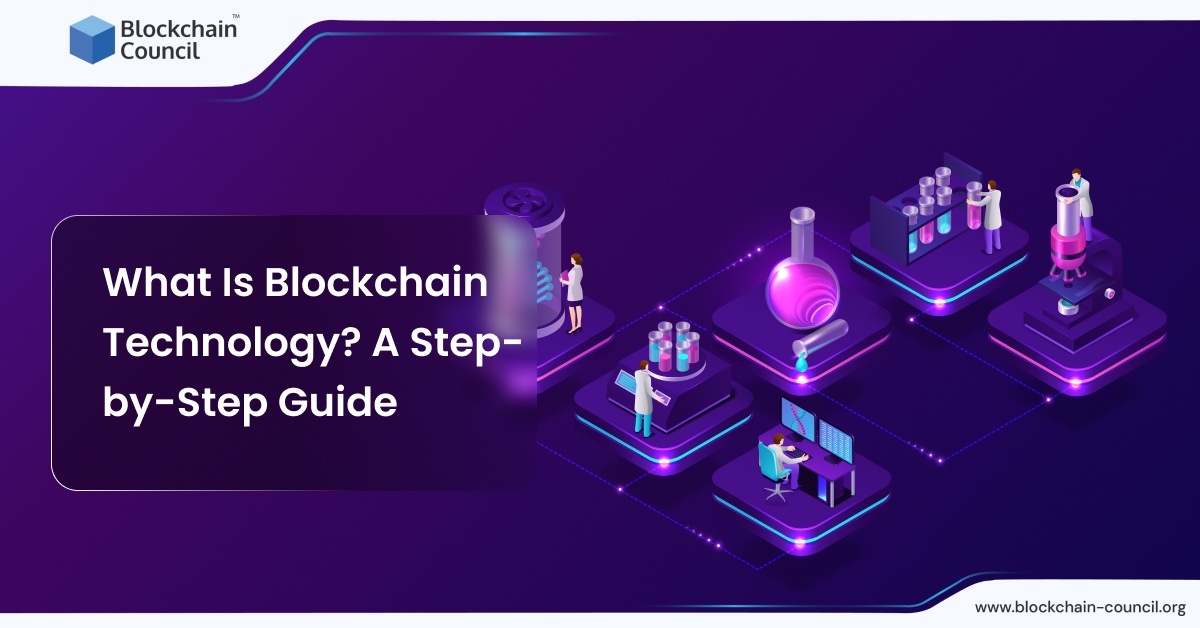If you're new to the concept of blockchain and blockchain developer or have heard the term but aren't quite sure how to become a blockchain developer, you're in the right place. In this step-by-step guide, we'll unravel the mysteries of blockchain technology, how to become a blockchain developer, explaining it in a way that's easy to understand, even if you're a beginner.
So, whether you're looking to explore a career in blockchain, understand its inner workings, or simply satisfy your curiosity about this transformative technology, this guide is your starting point. We'll cover the basics of blockchain, its key components, how it works, and how to become a blockchain developer. By the end, you'll have a solid grasp of blockchain technology and its exciting possibilities.
And if you're considering diving deeper into the world of blockchain, keep in mind that Blockchain Council offers the best blockchain courses designed to enhance your knowledge and expertise in this field. So, let's embark on this journey and demystify blockchain technology together.
The Intriguing History of Blockchain
The story of blockchain technology begins in the early 1990s when two visionary researchers, W. Scott Stornetta and Stuart Haber, laid the foundation for what would become blockchain technology. In 1991, they embarked on a mission to create a cryptographically secure chain of blocks that could safeguard document timestamps from tampering.
By 1992, Stornetta and Haber had integrated Merkle trees into their system. These trees not only enhanced performance but also allowed more documents to accumulate within a single block. Each data record in this chain was linked to the one preceding it, and the most recent record contained the entire history of the chain. Remarkably, the patent for this revolutionary technology expired in 2004, as it had never been commercialized.
Fast forward to 2004, and the blockchain landscape experienced a significant shift with the introduction of Reusable Proof of Work by Hal Finney. However, the true watershed moment in blockchain history arrived in 2008 with the emergence of Satoshi Nakamoto. Nakamoto not only introduced the concept of distributed blockchains but also made a critical improvement to the design.
These updated chains incorporated a secure ledger of data transfers, and in 2009, Satoshi Nakamoto unveiled the first whitepaper detailing the groundbreaking technology. This whitepaper outlined how blockchain's decentralized nature eliminated the need for centralized control, making it a powerful tool for enhancing digital trust.
If you're intrigued by this transformative journey and eager to explore the world of blockchain, consider Blockchain Council's best blockchain courses to learn blockchain technology.
The Fundamental Components of Blockchain
Blockchain technology is like a well-structured building, composed of several crucial components that work in harmony to build a secure and transparent digital ledger. To understand how this technology functions, let's explore its key components:
Blocks
Picture blocks as the building blocks of the blockchain. Each block contains a bundle of transactions or data. These transactions can vary widely, from cryptocurrency transfers to supply chain records and more.
Chain
The blocks are linked together in a chronological order to form a chain, hence the name "blockchain." This sequential arrangement ensures that the data is organized and immutable.
Decentralization
One of the most significant aspects of blockchain is its decentralized nature. Rather than relying on a single central authority, blockchain operates on a network of computers (nodes) spread across the globe. Each node holds a replica of the entire blockchain, promoting transparency and eliminating the risk of a single point of failure.
Cryptographic Hash
Cryptographic hashes are complex mathematical algorithms that play a crucial role in blockchain security. They are used to create a unique digital fingerprint for each block. If any information within a block is altered, even slightly, the hash changes dramatically, alerting the network to potential tampering.
Consensus Mechanism
This is the decision-making process that ensures all nodes on the blockchain network agree on the validity of transactions. Popular consensus mechanisms include Proof of Work (PoW) and Proof of Stake (PoS).
Smart Contracts
Smart contracts are self-executing contracts. They automatically execute and enforce these terms when predefined conditions are met. Ethereum is a prominent platform for building and deploying smart contracts.
Mining
In PoW blockchains like Bitcoin, mining is the process by which new blocks are added to the chain. Miners use their computational power to solve complex mathematical puzzles, and the first one to solve it gets to add a new block. This process ensures the security and decentralization of the network.
Public vs. Private Blockchains
Blockchain can be either public or private. Public blockchains, like Bitcoin, are open to anyone and are entirely transparent. Private blockchains are restricted to a specific group or organization and offer more control over access and permissions.
Immutability
Once a block is added to the blockchain, it becomes extremely challenging to alter or delete any information within it. This immutability ensures the integrity and trustworthiness of the data stored on the blockchain.
Wallets
Blockchain wallets are digital tools that allow users to store, manage, and interact with cryptocurrencies and digital assets. They are essential for securely storing private keys, which are necessary for authorizing transactions.
These fundamental components work together seamlessly to create a secure, transparent, and decentralized ledger that has applications across various industries.
To dive deeper into the world of blockchain and become proficient in its intricacies, consider enrolling in Blockchain Council's blockchain developer course. The course is designed to enhance your knowledge and empower you to excel in this transformative field.
Understanding How Blockchain Works
Here's a simplified step-by-step process of how a blockchain transaction works:
- A user initiates a transaction (e.g., transferring cryptocurrency).
- The transaction is broadcast to the blockchain network.
- Miners (in PoW) or validators (in PoS) verify the transaction's validity.
- Valid transactions are grouped into a block.
- Miners (in PoW) or validators (in PoS) compete to add the next block to the chain.
- Once added, the block is linked to the previous one, forming an unbreakable chain.
- The transaction is complete, and all nodes update their copies of the blockchain.
This simplified explanation illustrates the core principles of blockchain technology. To become proficient in this field and unlock its vast potential, consider enrolling in Blockchain Council's blockchain certification course. It provides in-depth knowledge and hands-on experience that will enhance your expertise in blockchain technology.
Becoming a Blockchain Developer: Your Path to Success with Blockchain Council
Are you intrigued by the world of blockchain technology and want to embark on a rewarding career as a blockchain developer? Look no further than Blockchain Council, your trusted partner on this exciting journey.
Whether you're new to blockchain or looking to enhance your existing skills, Blockchain Council's blockchain developer course is your gateway to success. Enroll today and take the first step towards an exciting and prosperous career in blockchain development. Your journey starts here with the Blockchain Council.
Conclusion
Blockchain technology is not just a buzzword; it's a transformative force reshaping industries and creating new opportunities. Whether you're an aspiring developer or a seasoned professional, mastering blockchain is a smart career move. With the guidance and expertise of Blockchain Council, your journey to becoming a blockchain developer is not only accessible but also promising.


No comments yet